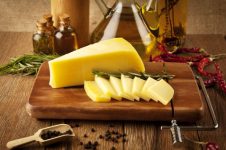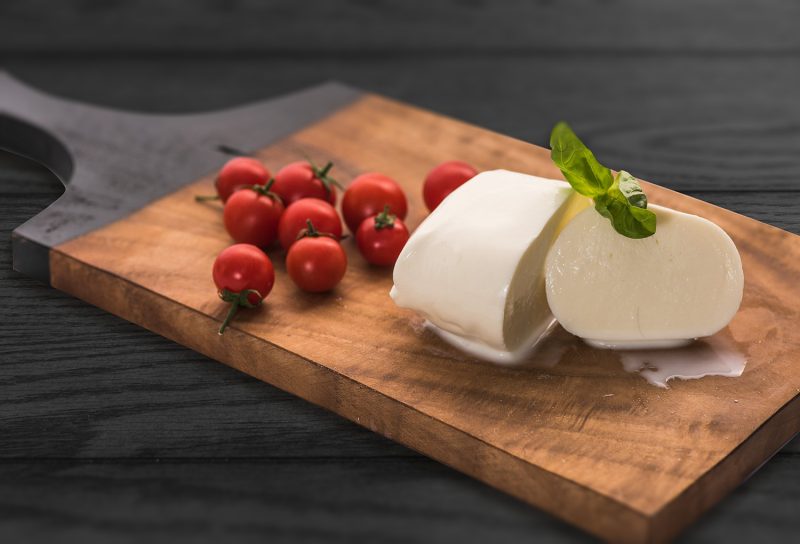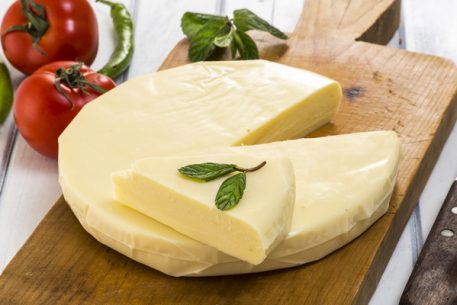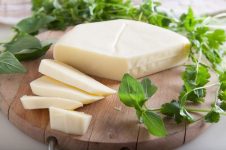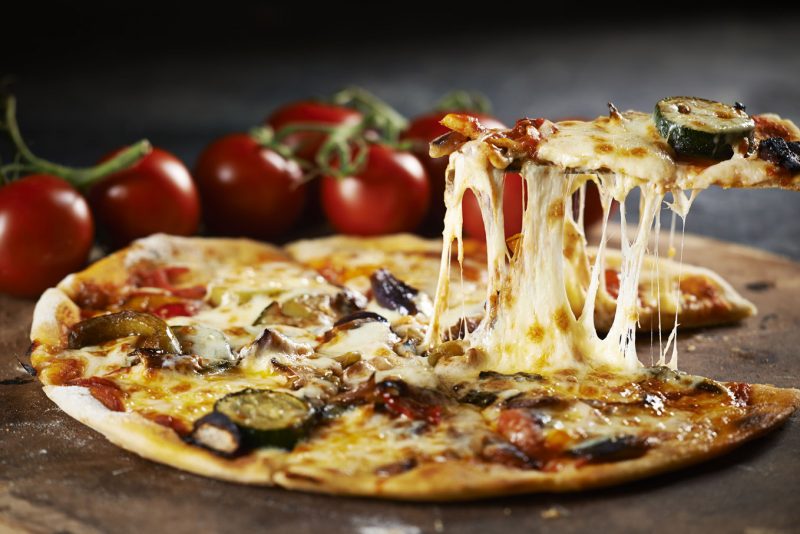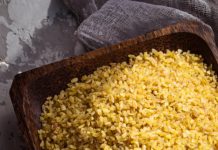Italian pizza has always been so popular that its recipe can be safely classified as international. The main secret of the success of their invention, Italians consider air dough and quality cheese. Therefore, wanting to pamper their family, many housewives ask themselves the question - which cheese is best for pizza, because the taste and usefulness of the dish depends on its quality.
Material Content:
Which cheese is better for pizza
The Italian pizza recipe is undergoing many changes. Not only the variety of fillings for the dish is changing, but also the types of cheese that can be used in it.
The necessary qualities of a good cheese for pizza is the ability to melt well, but not spread and have a delicate taste, without creating a conflict in combination with the filling.
Therefore, you need to use stretching cheese hard or semi-hard varieties. Soft varieties are added to the first layer, covering them with cake immediately after tomato sauce. An ideal option is mozzarella.
It can be replaced:
- feta;
- Suluguni;
- Adyghe cheese;
- feta cheese.
It is undesirable to replace the classic cheese with a melted analog, since when baked, it can behave unpredictably and form a substance similar to mucus. In addition, seasonings in the processed product can negatively affect the taste of the dish.
Using Hard Cheeses
Hard varieties are used for the final touch - a fragrant second layer. Therefore, it is better to use cheese with a long exposure (from 6 to 9 months). This exposure destroys the proteins in the cheese, after which it acquires a rich aroma with spicy notes. The longer the exposure, the more spicy the cheese taste.
Another important quality of hard cheese is the ability to melt, creating an appetizing, viscous crust on the surface of the dish.
Therefore, we boldly buy:
- Parmesan;
- Emmental;
- Maasdam
- Cheddar.
The proposed list can be successfully replaced with Dutch or Russian cheeses.
The last two cheese names are good on a budget.
To complete the dish, rub the cheese on a coarse grater and sprinkle over the finished pizza. A medium grater can also be used.
Classic mozzarella
Mozzarella is most often used in the first layer of pizza. After all, this cheese melts well, has excellent binding properties, and its milky taste sets off the flavor of the filling. During cooking, it forms a thin crust that does not harden when it cools. Another plus of mozzarella is the absence of an unpleasant smell when baking in the oven. In addition, it is easily absorbed by the body, because it contains calcium and protein.
First rule: the product must be fresh. It’s good if you are lucky to buy buffalo mozzarella. In this case, its taste is increased, and the benefits to the body will be greater. Such mozzarella will successfully emphasize the taste of tomato and basil.
In the manufacture of pizza, mozzarella is cut into thin slices or slices and laid evenly on the dough. You can also grate it on a coarse grater and add to the top layer of pizza. In this case, it gently reveals all the shades of any other cheese, and the dish is completed by its soft and dense crust.
Suluguni for pizza
Suluguni is considered a good alternative to mozzarella, because this sour-milk cheese also melts well and stretches after cooling the pizza. The main difference: it has a brackish taste and a dense layered structure than mozzarella. It belongs to the group of brine cheeses, because it ripens in brine. It has a specific taste. He has no crust.
A nice bonus - stretching cheese has a reduced calorie content. Its nutritional value is half that of other cheeses, and this allows you to cook delicious pizza for fans of proper nutrition.
Before use, it is finely crushed and coated with a uniform layer over the cake. Then it will melt quickly and evenly, and all components will be interconnected. Suluguni can be added to the first layer, while it is better to mix a small amount with another cheese, for a spicy shade.
Pizza Cheese to Stretch
In addition to mozzarella and suluguni, you can use other types of cheese for baking in the oven. This is feta, feta cheese, Adyghe cheese. They melt well, and when slicing the finished pizza they stretch. Soft cheeses have a neutral or milky taste, which means they will not "argue" with the aroma of the remaining components.
Use in both the first and second layer. In the manufacture of pizza, such cheeses are also finely chopped by hand and evenly cover the dish.
The housewives, experimenting with the recipe, add sausage cheese, which brings a pleasant sharpness and spicy notes to the finished product. For baking in the oven, just cut into thin slices and completely cover the surface of the pizza.





